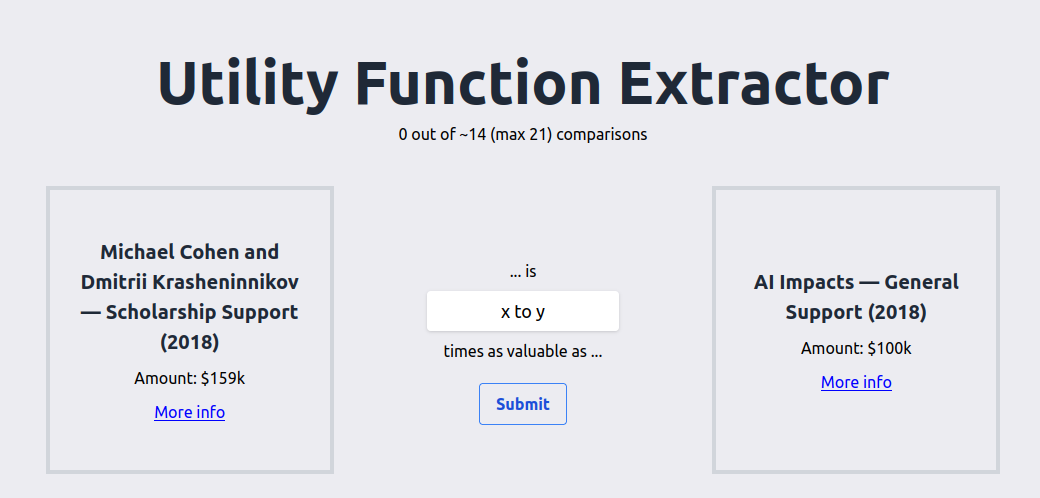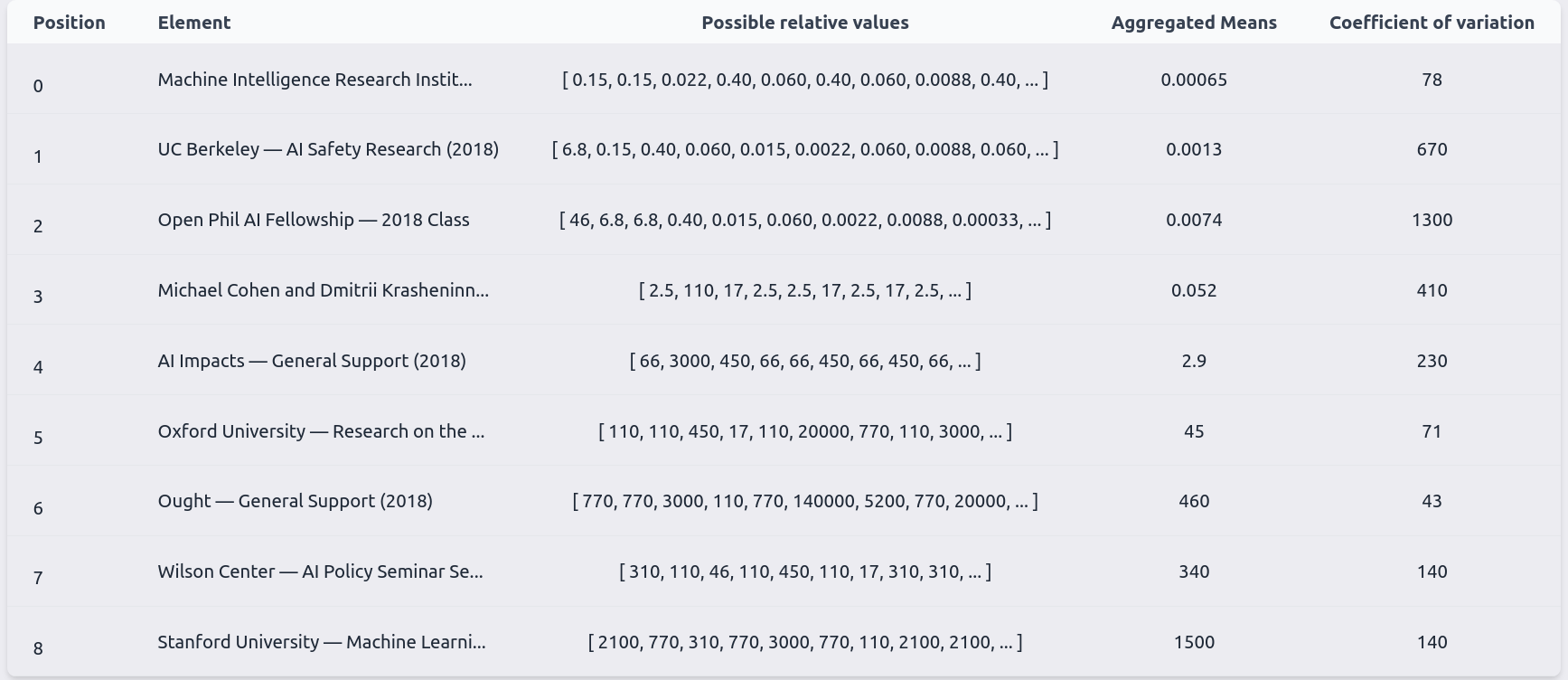4.0 KiB
About
This repository creates a react webpage that allows to extract a utility function from possibly inconsistent binary comparisons.
It presents the users with a series of elements to compare, using merge-sort in the background to cleverly minimize the number of choices needed.
Then, it cleverly aggregates them, on the one hand by producing a graphical representation:
and on the other hand doing some fast and clever mean aggregation 1:
Initially, users could only input numbers, e.g., "A is 3 times better than B". But now, users can also input distributions, using the squiggle syntax, e.g., "A is 1 to 10 times better than B", or "A is mm(normal(1, 10), uniform(0,100)) better than B".
If you want to use the utility function extractor for a project, we are happy to add a page for your project, like utility-function-extractor.quantifieduncertainty.org/your-project.
Built with
Usage
Navigate to utility-function-extractor.quantifieduncertainty.org/, and start comparing objects.
You can change the list of objects to be compared by clicking on "advanced options".
After comparing objects for a while, you will get a table and a graph with results. You can also use the [utility tools](to do: add link) package to process these results, for which you will need the json of comparisons, which can be found in "Advanced options" -> "Load comparisons"
Notes
The core structure is json array of objects. Only the "name" attribute is required. If there is a "url", it is displayed nicely.
[
{
"name": "Peter Parker",
"someOptionalKey": "...",
"anotherMoreOptionalKey": "...",
},
{
"name": "Spiderman",
"someOptionalKey": "...",
"anotherMoreOptionalKey": "..."
}
]
The core structure for links is as follows:
[
{
"source": "Peter Parker",
"target": "Spiderman",
"squiggleString": "1 to 100",
"distance": 26.639800977355474
},
{
"source": "Spiderman",
"target": "Doctor Octopus",
"squiggleString": "20 to 2000",
"distance": 6.76997149080232
},
]
A previous version of this webpage had a more complicated structure, but it has since been simplified.
Contributions and help
We welcome PR requests.
License
Distributed under the MIT License. See LICENSE.txt for more information.
To do
- Extract merge, findPath and aggregatePath functionality into different repos
- Send to mongo upon completion
- Push to github
- Push to netlify
- Don't allow further comparisons after completion
- Paths table
- Add paths table
- warn that the paths table is approximate.
- However, I really don't feel like re-adding this after having worked out the distribution rather than the mean aggregation
- However, I think it does make it more user to other users.
- Add functionality like names, etc.
- I also don't feel like doing this
- Look back at Amazon thing which has been running
- Change README.
Footnotes
-
The program takes each element as a reference point in turn, and computing the possible distances from that reference point to all other points, and taking the geometric mean of these distances. This produces a number representing the value of each element, such that the ratios between elements represent the user's preferences: a utility function. However, this isn't perfect; the principled approach woud be to aggregate the distributions rather than their means. But this principled approach is much more slowly. For the principled approach, see the
utility-toolsrepository. ↩︎


